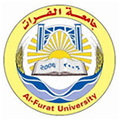آخر الأخبار
وسط الزرتأثير إضافة خميرة الخبز (Saccharomyces cerevisiae) لبعض مخلفات البقوليات في إنتاجية الفطر المحاري( Pleurotus ostreatus)
2013, Volume 8, issue 31,pp 143-162| Cite as
Effect of adding bread yeast (Saccharomyces cerevisiae) to some of legumes residues in the productivity of oyster mushrooms (Pleurotus ostreatus)
| authors |
Fawaz Alhaji, Mohammad mouafaq yabraq , Bassam ALabosh |
| Abstract |
The Search was conducted in General Commission for Scientific Agricultural Research in the Research Station Tartab/ Research Center Qamishli / so as to determine the best substrate for the growth and production of Oyster Mushroom "Pleurotus ostreatus" To study the effect of adding different levels of bread yeast "Saccharomyces cerevisiae" for substrates used in the quantity and quality of production of the Oyster Mushroom. Sterilized substrates with boiling water and processing mixtures following: wheat straw (check) 100%, the remnants of chickpeas 100%, the remnants of lentils, 100%, the remnants'of vetch 100%. the remnants of chickpeas, 75% + wheat straw 25%, the remnants of lentils 75%+ wheat straw 25%, the remnants of vetch 75% + 25% wheat straw, chickpeas remains 25% + lentils remains 25% + vetch remnants 25% + 25% wheat straw. Added yeast at the rate of (2,1,0g/1 kg dry, The results showed the possibility of using leguminous residues locally available in abundance in Oyster mushroom production instead of wheat straw and matured objects fruiting theni quickly in comparison with wheat straw while stop the rapid growth Mycelium on the quality of the substrate and mixing ratio in the compound substrates, remnants of lentils gave the highest productivity and the yeast's role in activating and increasing decomposition substrates and add them at the rate of 2 g / 1 kg substrate work on raising productivity in all search parameters It will also work to increase the proportion of dry matter and protein.
Key Words: Oyster Mushroom(Pleurotus ostreatus), the Yeast (Saccharomyces cerevisiae), legumes residues. |
| الكاتب |
فواز الحاجي , محمد موفق يبرق , بسام العبوش |
| الملخص |
نفذ البحث في الهيئة العامة للبحوث العلمية الزراعية في محطة بحوث طرطب مركز بحوث القامشلي لتحديد أفضل وسط لزراعة و نمو وانتاج الفطر المحاري e ost ditas Pleurotus أضيفت مستويات مختلفة من خميرة الخبز Saccharomyces cerevisiae المخلفات البقوليات بعد تعقيم أوساط الزراعة بغليها بالماء وتجهيز الخلطات التالية: قش القمح )شاهد) %100، بقايا الحمص %100، بقايا العدس %100، بقايا البيقية% 100، بقايا الحمص+% 75 قش القمح% 25، بقايا العدس+% 75 قش القمح% 25، بقايا البيقية+ %75 قش القمح% 25، بقايا الحمص+% 25 بقايا العدس% 25. بقايا البيقية+% 25 قش القمح %25. أضيفت الخميرة على ثلاث مستويات (2,1,0) غ1/كغ وسط جاف، أوضحت النتائج إمكانية استخدام البقايا البقولية المتوفرة محلية بكثرة في إنتاج الفطر المحاري بدلا من قش القمح ونضجت الأجسام الثمرية عليها بسرعة بالمقارنة مع قش القمح في حين تتوقف. سرعة نمو الميسيليوم على نوعية الوسط ونسبة الخلط في الأوساط الخليطة وأعطى وسط بقايا العدس أعلى إنتاجية ، كما تبين أن للخميرة دور في تنشيط وزيادة تحلل وسط الزراعية و أن إضافتها بمعدل 2غ1كغ وسط جاف أدى إلى رفع الإنتاجية بجميع معاملات البحث كما أن ذلك عمل على زيادة نسبة المادة الجافة والبروتين الكلمات المفتاحية: الفطر المحاري ، (Pleurotus ostreatus)، الخميرة (Saccharomyces cerevisiae)، البقايا البقولية. |














